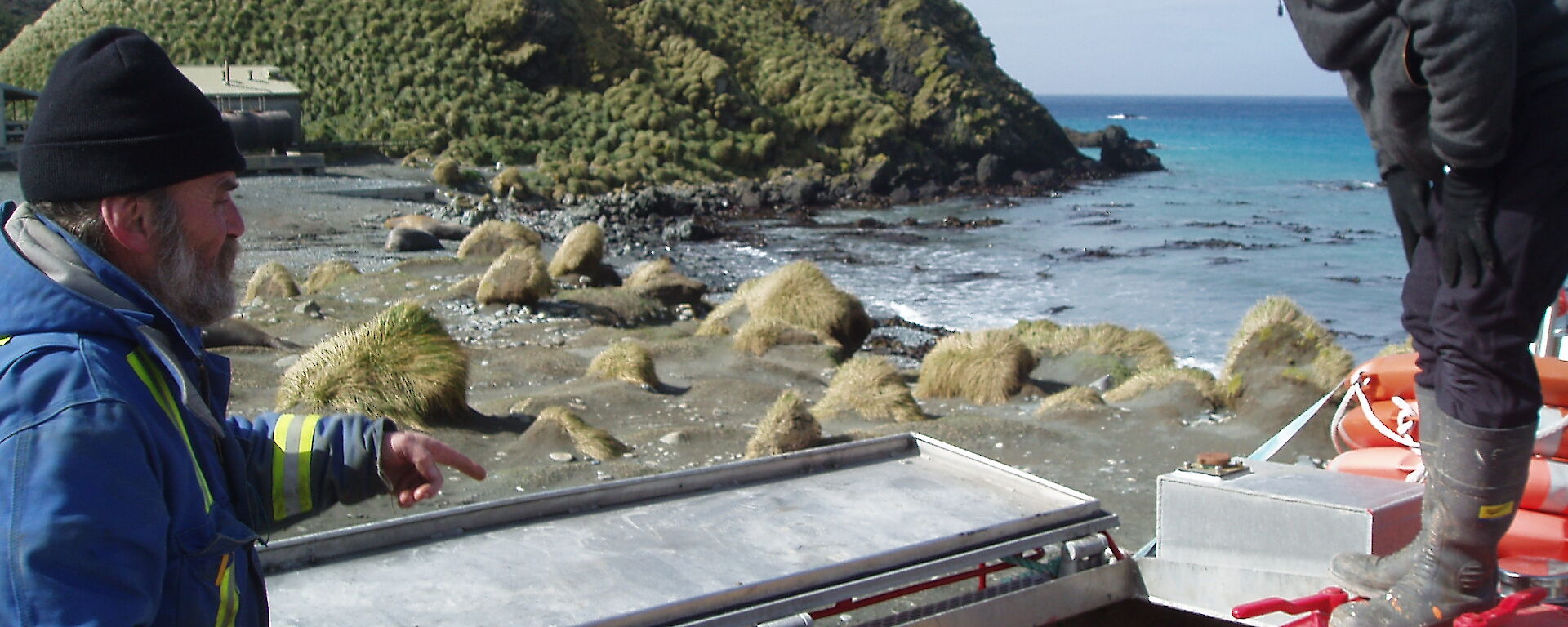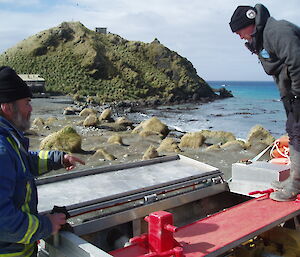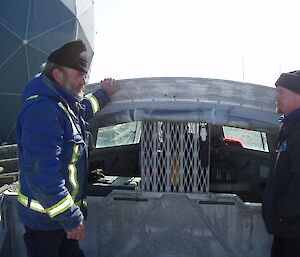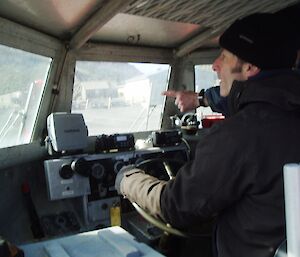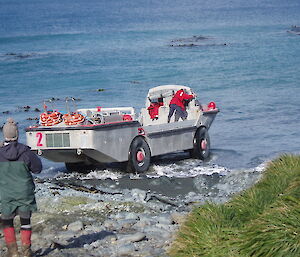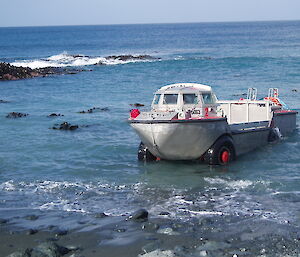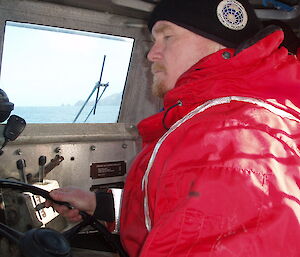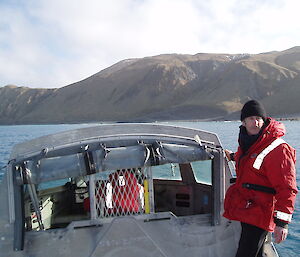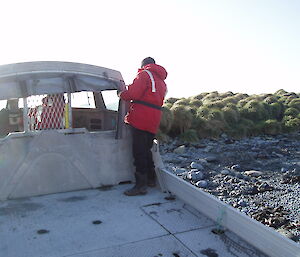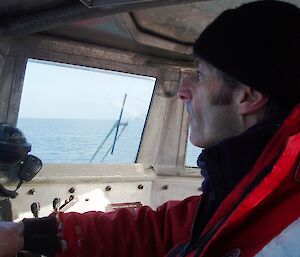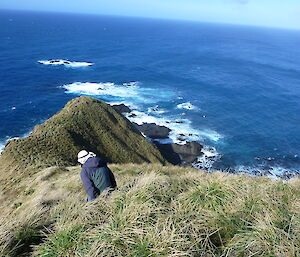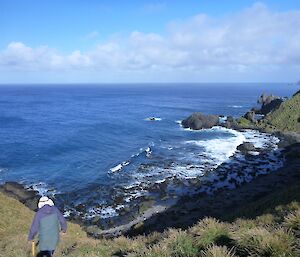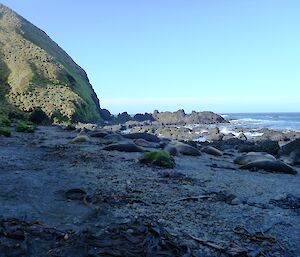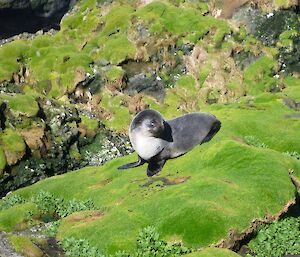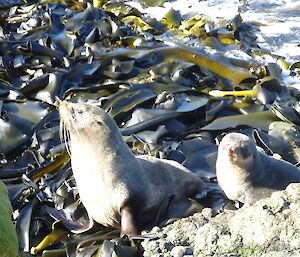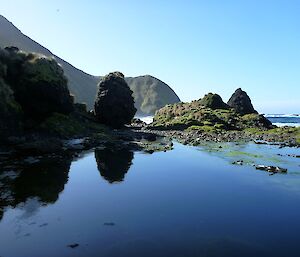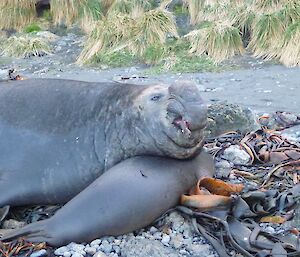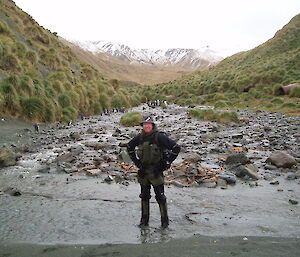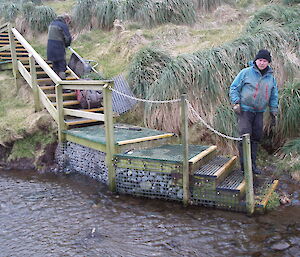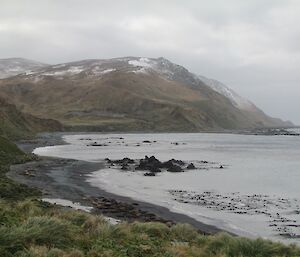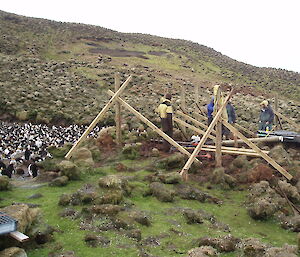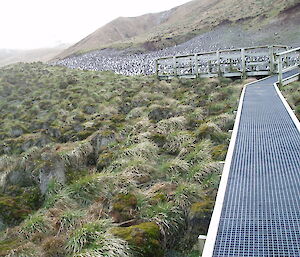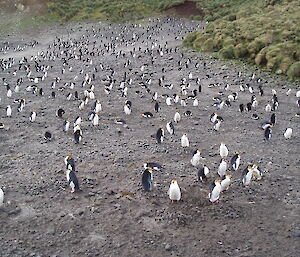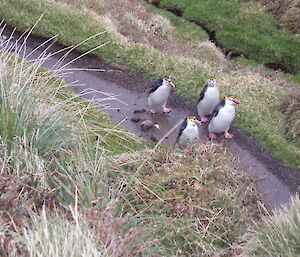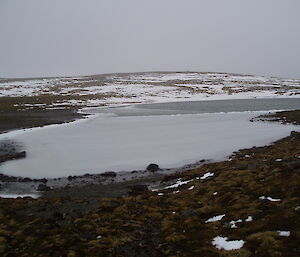Currently at Macca we have two LARCs (Lighter, Amphibious Resupply Cargo). These are the ex-military amphibious boat/trucks which have rendered sterling service over many years, originally operated in support of the Australian Antarctic Division (AAD) by the Army small boat squadron, and now owned and operated by the AAD. They have been particularly useful for ship to shore transfer of cargo and personnel at Macca, where there are no wharf or jetty facilities of any kind.
We are planning on utilising one of the LARCs for ship to shore transfers during the coming visit of L'Astrolabe for voyage VR0 later this month. This voyage will deliver 13 summer personnel and a limited amount of cargo. Using a LARC will expedite procedures greatly, and make the cargo operations go much more smoothly compared with using zodiac inflatable rubber boats (IRBs), the only alternative. Our station boating officer and senior expedition mechanic Pete is a very experienced LARC coxswain. We needed to get our other two qualified coxswains, field training officer Ian and TASPAWS ranger in charge Chris, trained to operate the LARCs in order to assist Pete, and most importantly to have the second LARC on standby on shore with a qualified crew in case of any unforeseen difficulties that may arise with the first LARC.
We had been awaiting the right day to undertake this training. We needed a light wind and light sea state day, suitable for IRB operation, as our standby assistance craft for the training exercise was an IRB, with one of the coxswains and crew on shore with the IRB at all times.
Last Sunday the right day came along. After doing the on shore training, Pete took Ian and Chris out in turns and put the LARC through all its paces with the trainees at the helm. Both trainees passed “with flying colours” and we now look forward to a useful LARC operation with VR0 in two weeks’ time.

